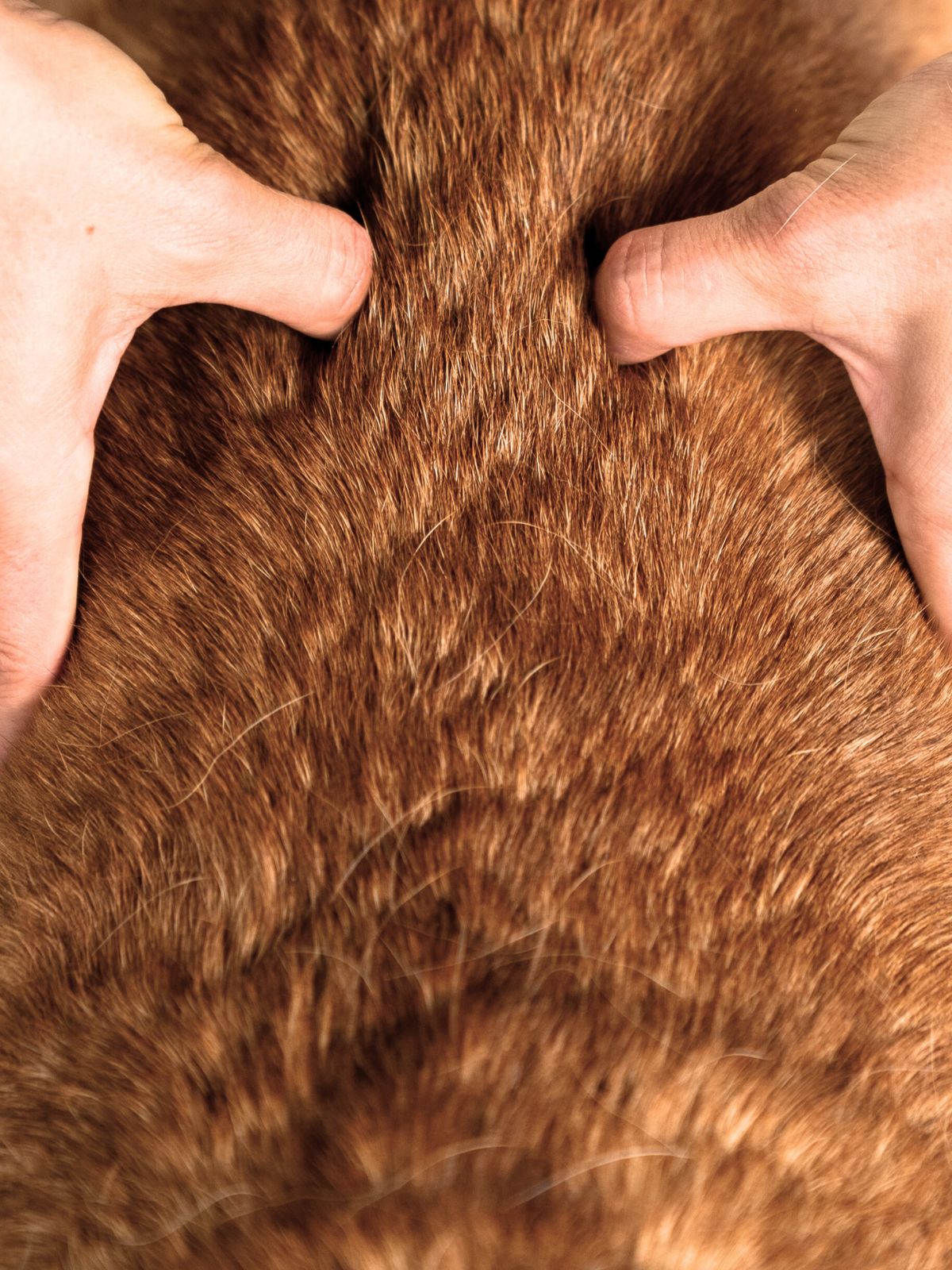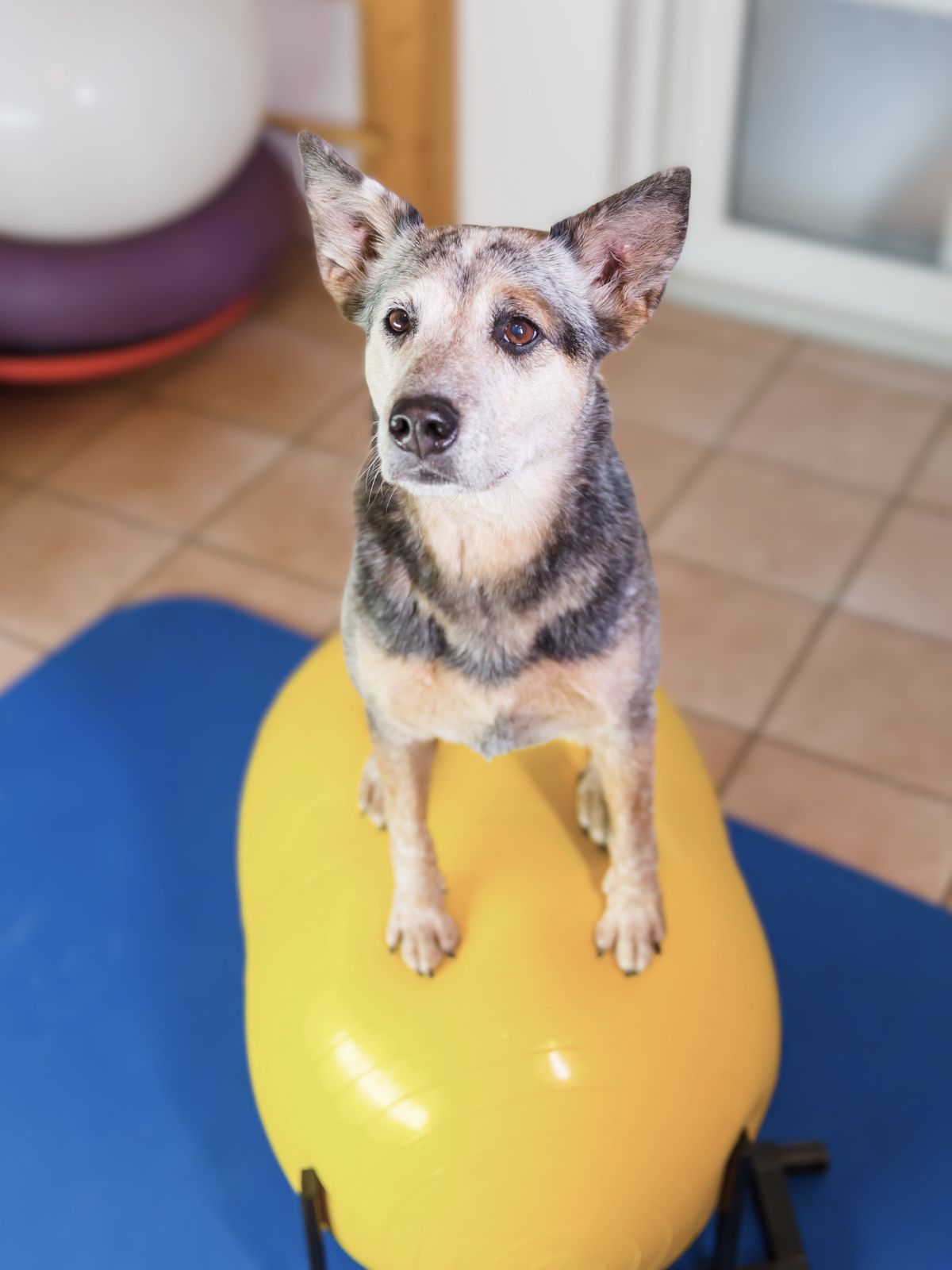Lumbosacral Disease in Dogs
In-Home Rehabilitation to Manage Nerve Compression, Improve Mobility, and Support Lumbosacral Stability
Understanding Lumbosacral Disease in Dogs
Lumbosacral disease in dogs refers to a group of conditions that affect the lumbosacral junction—the region where the lumbar spine meets the sacrum. The most common form is degenerative lumbosacral stenosis (DLSS), also known as cauda equina syndrome, in which narrowing of the spinal canal leads to compression of the cauda equina nerves. This can result in a combination of neurological and orthopaedic signs, including pain, weakness, and mobility deficits.
Lumbosacral disease is most frequently diagnosed in medium to large breed dogs, particularly working breeds such as German Shepherds and Labrador Retrievers. Clinical signs may include difficulty rising or jumping, reluctance to climb stairs, intermittent hindlimb lameness, muscle atrophy, reduced tail carriage, and pain when the lower back is palpated or extended. In more advanced cases, urinary or faecal incontinence may be present due to nerve root compression.
Diagnosis is typically based on clinical examination, neurological testing, and advanced imaging such as MRI or CT. Treatment may be conservative or surgical, depending on the severity of signs and degree of nerve compression. In both cases, rehabilitation plays a critical role in supporting spinal function, managing pain, and preserving mobility.
Why Rehabilitation Matters
Rehabilitation is essential for managing lumbosacral disease in dogs, whether treatment is conservative or follows surgical decompression. Dogs with lumbosacral pathology often present with a combination of spinal pain, proprioceptive deficits, pelvic limb weakness, and compromised mobility. Without structured therapeutic input, these impairments can worsen over time—resulting in reduced function, compensatory strain on adjacent regions, and a decline in quality of life.
Rehab therapy focuses on stabilising the lumbosacral junction, restoring motor control, and improving the dog’s ability to move safely and confidently. In cases managed without surgery, rehabilitation provides a non-invasive approach to maintaining comfort, enhancing core strength, and reducing mechanical stress on the affected segment.
Targeted therapy also addresses functional issues that are difficult to resolve with surgery or medication alone—such as altered gait, abnormal weight distribution, and delayed limb placing. Through progressive intervention and tailored exercise, rehabilitation promotes safer movement, reduces reliance on pain medication, and helps dogs remain active, mobile, and independent.
Rehabilitation for Lumbosacral Disease in Dogs
Rehabilitation for lumbosacral disease in dogs focuses on reducing pain, restoring functional mobility, and improving stability across the lumbosacral junction. Whether dogs are recovering from surgical decompression or are being managed conservatively, therapy is tailored to their neurological status, musculoskeletal presentation, and individual functional goals.
All treatment is delivered in the home environment, allowing for assessment and intervention within the context of the dog’s daily routines—ensuring relevance, safety, and consistency of care.
Interventions may include:
-
Manual therapy to address soft tissue tension, improve spinal mobility, and relieve paraspinal muscle guarding
-
Core strengthening and postural retraining to stabilise the lumbosacral region and support load-bearing through the pelvic limbs
-
Neuromuscular re-education to improve motor control, coordination, and functional limb use
-
Proprioceptive and balance training to enhance limb awareness and trunk control
-
Photobiomodulation (PBMT) to reduce inflammation, manage neuropathic pain, and support nerve root recovery
-
Home exercise programs to maintain therapeutic gains, reinforce appropriate movement patterns, and support long-term function
-
Owner education on safe handling, mobility management, and environmental modifications to reduce spinal strain
This targeted approach addresses both the neurological and mechanical components of lumbosacral disease, helping dogs regain confidence in movement and maintain independence in daily life.


